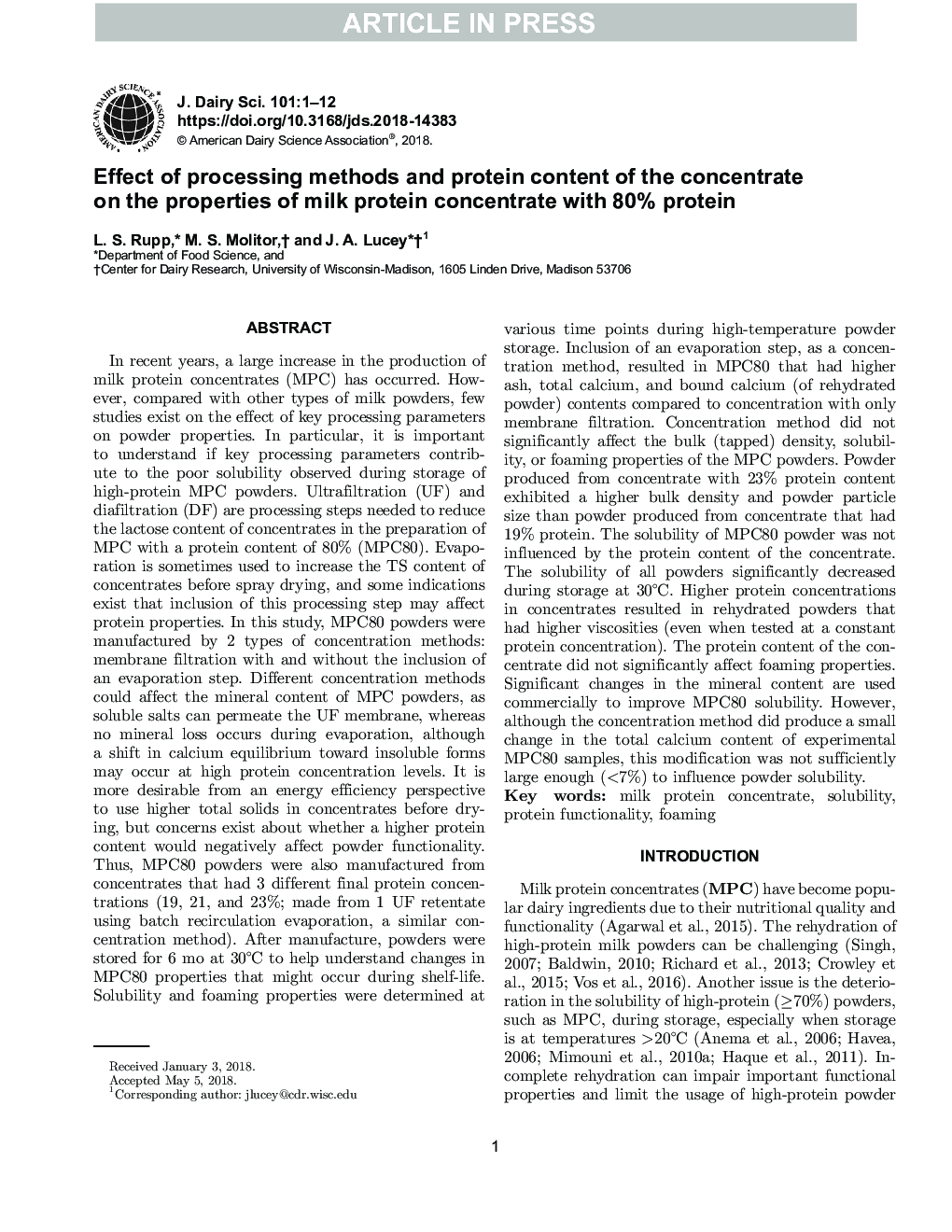| کد مقاله | کد نشریه | سال انتشار | مقاله انگلیسی | نسخه تمام متن |
|---|---|---|---|---|
| 8956434 | 1646155 | 2018 | 12 صفحه PDF | دانلود رایگان |
عنوان انگلیسی مقاله ISI
Effect of processing methods and protein content of the concentrate on the properties of milk protein concentrate with 80% protein
ترجمه فارسی عنوان
اثر روش های پردازش و محتوای پروتئین کنسانتره بر خواص پروتئین پروتئین پروتئین پروتئین پروتئین شیر
دانلود مقاله + سفارش ترجمه
دانلود مقاله ISI انگلیسی
رایگان برای ایرانیان
کلمات کلیدی
پروتئین پروتئین کنسانتره انحلال پذیری، عملکرد پروتئین، فوم
موضوعات مرتبط
علوم زیستی و بیوفناوری
علوم کشاورزی و بیولوژیک
علوم دامی و جانورشناسی
چکیده انگلیسی
In recent years, a large increase in the production of milk protein concentrates (MPC) has occurred. However, compared with other types of milk powders, few studies exist on the effect of key processing parameters on powder properties. In particular, it is important to understand if key processing parameters contribute to the poor solubility observed during storage of high-protein MPC powders. Ultrafiltration (UF) and diafiltration (DF) are processing steps needed to reduce the lactose content of concentrates in the preparation of MPC with a protein content of 80% (MPC80). Evaporation is sometimes used to increase the TS content of concentrates before spray drying, and some indications exist that inclusion of this processing step may affect protein properties. In this study, MPC80 powders were manufactured by 2 types of concentration methods: membrane filtration with and without the inclusion of an evaporation step. Different concentration methods could affect the mineral content of MPC powders, as soluble salts can permeate the UF membrane, whereas no mineral loss occurs during evaporation, although a shift in calcium equilibrium toward insoluble forms may occur at high protein concentration levels. It is more desirable from an energy efficiency perspective to use higher total solids in concentrates before drying, but concerns exist about whether a higher protein content would negatively affect powder functionality. Thus, MPC80 powders were also manufactured from concentrates that had 3 different final protein concentrations (19, 21, and 23%; made from 1 UF retentate using batch recirculation evaporation, a similar concentration method). After manufacture, powders were stored for 6 mo at 30°C to help understand changes in MPC80 properties that might occur during shelf-life. Solubility and foaming properties were determined at various time points during high-temperature powder storage. Inclusion of an evaporation step, as a concentration method, resulted in MPC80 that had higher ash, total calcium, and bound calcium (of rehydrated powder) contents compared to concentration with only membrane filtration. Concentration method did not significantly affect the bulk (tapped) density, solubility, or foaming properties of the MPC powders. Powder produced from concentrate with 23% protein content exhibited a higher bulk density and powder particle size than powder produced from concentrate that had 19% protein. The solubility of MPC80 powder was not influenced by the protein content of the concentrate. The solubility of all powders significantly decreased during storage at 30°C. Higher protein concentrations in concentrates resulted in rehydrated powders that had higher viscosities (even when tested at a constant protein concentration). The protein content of the concentrate did not significantly affect foaming properties. Significant changes in the mineral content are used commercially to improve MPC80 solubility. However, although the concentration method did produce a small change in the total calcium content of experimental MPC80 samples, this modification was not sufficiently large enough (<7%) to influence powder solubility.
ناشر
Database: Elsevier - ScienceDirect (ساینس دایرکت)
Journal: Journal of Dairy Science - Volume 101, Issue 9, September 2018, Pages 7702-7713
Journal: Journal of Dairy Science - Volume 101, Issue 9, September 2018, Pages 7702-7713
نویسندگان
L.S. Rupp, M.S. Molitor, J.A. Lucey,
